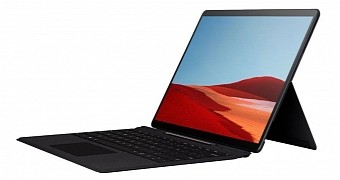October 2 is the day when Microsoft will finally announce a series of upgrades for its Surface line of products, and without a doubt, the most anticipated unveiling concerns the company’s very first dual-screen device.
Codenamed Centaurus, this new Surface model has been in the works for at least a couple of years. Many called it the Surface Phone originally, but it was eventually discovered that Microsoft no longer wanted to invest in the phone hardware ecosystem and focus on the main purpose of the Surface series.
This dual-screen Surface will come with two different displays that will support multiple form factors with increased screen estate. The tablet mode will obviously benefit from the screen area of the two displays, but as far as the laptop mode is concerned, the most important details are yet to be figured out.
Is Microsoft planning to allow a secondary screen to double as a keyboard? Or will the company allow buyers to attach a Type Cover over one of the screens using the existing connector design?
Without a doubt, Microsoft stepping into the world of dual-screen devices is big news. Not only for the company itself, but for the rest of the industry as well. And it’s all pretty much because the Redmond-based tech giant typically pioneers such form factors, with the rest of the ecosystem then following in its footsteps with similar devices.
And yet, the dual-screen Microsoft Surface might not be Redmond’s biggest announcement.
What I believe is at least as important is the ARM-powered Microsoft Surface.
While at this point the details regarding this particular model are very scarce, it’s all but confirmed that an ARM Surface is coming. And while I do know that Windows 10 on ARM has so far failed to make an impact, this is exactly why Microsoft’s first model insisting for this platform is so important.
First and foremost, it’s because Microsoft launching an ARM-powered Surface shows the company doesn’t want to give up on this project. And if Microsoft itself invests in it, many of its partners will do the same, which eventually means that many other laptops and 2-in-1s running Windows 10 on ARM should eventually see daylight.
Second of all, it’s what an ARM-based Surface means for customers. ARM devices have mostly impressed in terms of battery life, with some models going as high as 20 hours per charge. This is undoubtedly something that you don’t hear every day, and I for one would love a device with such a battery life.
But at the same time, Windows running on an ARM chip sometime proved an idea that’s harder to do from a performance perspective. Not only that an ARM system comes with its own limitations, but the performance of such devices doesn’t reach the expectations of someone committed to the Windows 10 ecosystem.
Most likely, Microsoft has worked with Qualcomm to squeeze every little bit of performance from the Snapdragon chip that the company will use on this Surface Pro, so it’ll certainly be interesting to see how the whole thing runs. Because it all depends on the performance in the first place.
The ARM-based Microsoft Surface can be a hit if Microsoft gets it right, so in the long term, this particular model can deliver the perfect mix of performance, battery life, and the premium build quality that you expect from a Surface device.
It won’t take long until we find out if Microsoft’s ARM Surface is worth the money, but if this project fails, there’s a good chance that Windows 10 on ARM as a project is pretty much dead.

 14 DAY TRIAL //
14 DAY TRIAL //